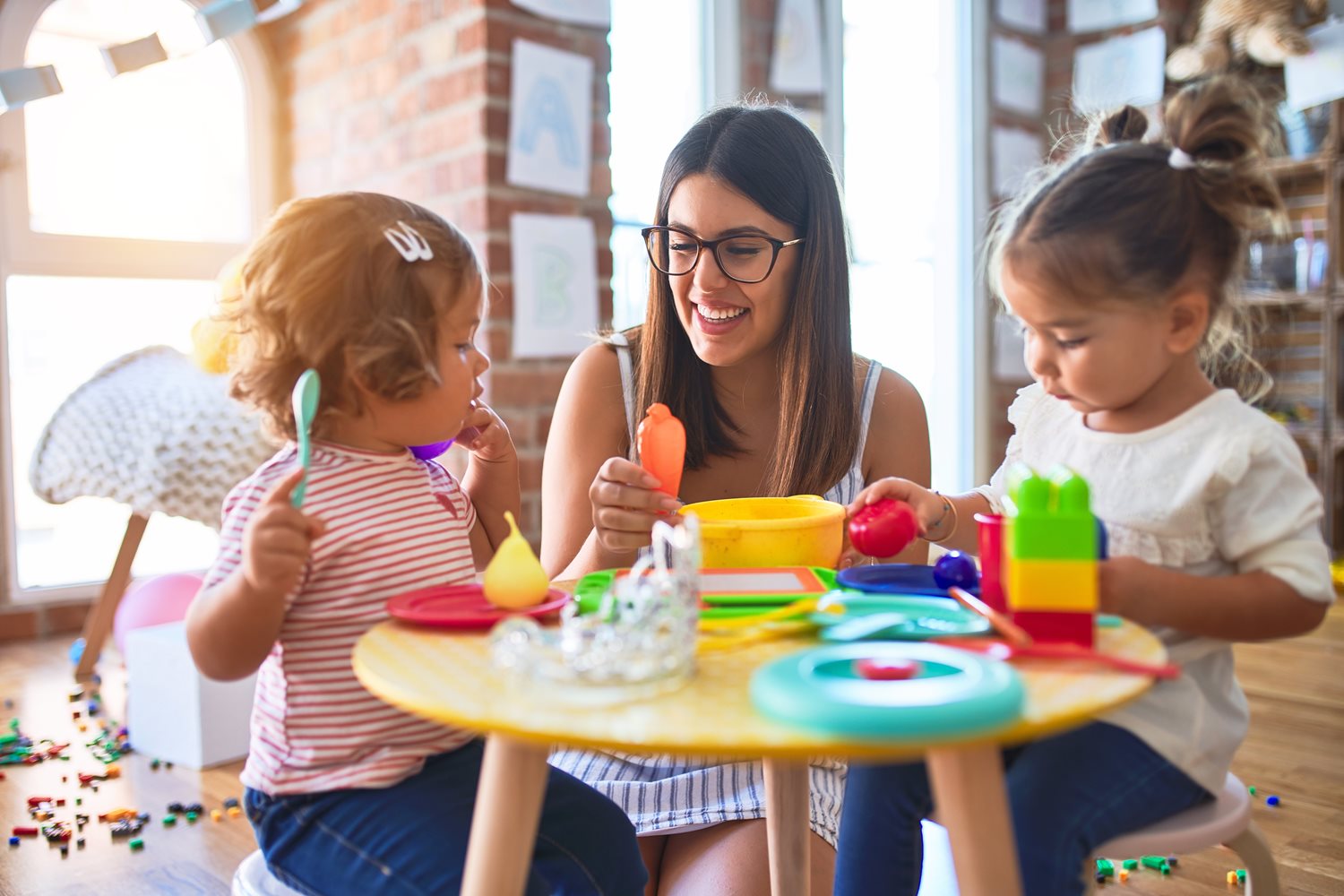Connection in the Classroom

In a busy classroom, what does it take to engage children with diverse abilities in meaningful interactions?
Answering this question was an overarching goal of a recent Learning Language and Loving It™ Program I facilitated at an integrated preschool in Toronto. The staff at this centre worked with children representing a wide range of developmental abilities, including:
- typically developing sentence users
- autistic children who did not communicate verbally
- medically fragile children
- children who required the assistance of physical equipment to participate in classroom activities
Many of these children were also involved in physical and occupational therapy, and came to the centre with several goals, including communication. What quickly became clear was that how staff engaged with the children and the structure of their classrooms influenced the quantity and the quality of adult-child interactions.
Meet Tracy
Tracy Stuchbery, one of the centre’s educators, participated in this Learning Language and Loving It program. Like her colleagues, Tracy was tasked with supporting children’s social and language skills, among other goals. During our group discussions, the staff had questions about priorities – they wondered what to "teach" and when. As the Learning Language and Loving It program progressed, perspectives shifted, and one thing became clear: children learned best when staff prioritized child-led interactions. This involved letting go of a teacher-led, skill-building agenda in favor of first connecting with each child based on their individual interests.
In this video, Tracy shares her experience with the impact of prioritizing connection with the child:
Over the course of the program, the more opportunities children were given to lead the play, the more engaged they became. Tracy and her colleagues took note of this impact. They began to recognize that when children were interested and attending, they were primed to learn, regardless of the therapy goal being targeted.
Nooks!
Another pivotal point in the program came after Session 7 on Fostering Peer Interaction. I had used the word “nook” to describe a well-defined space with some partitions where a child or small group of children could play and interact. I talked about my own 5-year-old who we often find creating an imaginary “office space” or “store” in the nook between her toy kitchen and our backyard door.
The participants took this to heart. They brainstormed ways to use existing furniture to partition their large, open classrooms.
The result?
Several well-defined play areas were created in each classroom, where:
- small groups of 2-4 children began coming together naturally
- children stayed to play for longer periods of time
- children were more focused, with fewer distractions and disruptions from their peers
- children were more regulated
Why was this so impactful?
- Educators were able to facilitate peer interaction more easily because the same group of children stayed to play
- When children were more regulated, they were better primed to interact and learn
- Educators were also able to interact with individual children for longer periods
Here, Tracy shares the impact of creating well-defined spaces in her classroom:
How did changes to adult-child interactions and classroom structure impact the overall quality of this centre?
When it comes to evaluating quality in early childhood settings, two categories of factors are important to consider:
Structural Components of Quality
• Number of children
• Adult-child ratios
• Materials and activities
• A child-centered philosophy
• Small groups
Process Components of Quality
• Educators’ responsiveness to children
• Educators’ ability to engage children in extended interactions (e.g., four or more turns)
• Educators’ use of developmentally appropriate language
Research tells us that the most important aspect of high-quality childcare is the quality and quantity of interaction between caregiver and child (Burchinal, 2018; Doherty 1998; Fuller, 2004; Montie et al, 2006; Rudd, 2007). We also see that the physical environment can influence how children interact within it. Tweaks to classroom structure can make interactions easier – and better!
Here are some ways that the Learning Language and Loving It program improves educators’ interactions with children by addressing structural components in the classroom:
- Educators learn that the best interactions happen in small groups of 3-5 children.
- Educators recognize how to select appropriate materials and activities for children at different developmental levels.
And in the session specific to peer interaction, educators learn how to:
- Set up materials in a way that encourages children to engage with each other.
- Make the most of space by creating well-defined play areas that encourage children to come together and stay to play.
Maximizing educators' ability to foster children’s language, literacy and social skills means addressing both structure and process. In other words, helping educators become responsive to children and engage them in language-rich interactions is best done in an environment that supports those interactions.
Bring Learning Language and Loving It Strategies to Your Early Childhood Setting
If you train or consult to educators, you may be interested in using Learning Language and Loving It strategies to enhance classroom quality. Explore the links below to learn more:
- Learning Language and Loving It Workshop – Attend this 3-day online workshop to become certified to lead the Learning Language and Loving It Program for educators and to use the materials in 1-1 consultations.
- Boosting Peer Play e-Seminar – Access our new e-Learning session to learn strategies from Learning Language and Loving It to maximize peer play opportunities for all children.
- Learning Language and Loving It guidebook – Use this practical guidebook in your work with educators to help them promote the best possible social, language and literacy skills for children in early childhood settings (birth—5).
